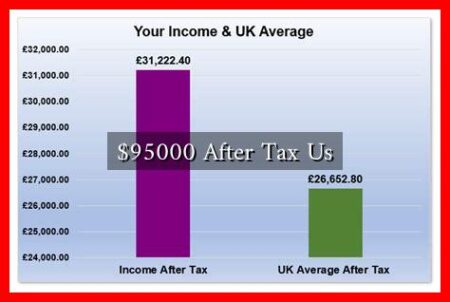-
Table of Contents
Understanding U.S. Taxes on a $60,000 Income
Taxation is a fundamental aspect of the financial landscape in the United States, affecting individuals and families across various income brackets. For those earning around $60,000 annually, understanding the intricacies of the tax system is crucial for effective financial planning. This article delves into the tax implications for individuals earning this amount, including federal income tax rates, deductions, credits, and overall tax liability.
Federal Income Tax Rates
The U.S. federal income tax system is progressive, meaning that tax rates increase as income rises. For the tax year 2023, the federal income tax brackets are as follows:
- 10% on income up to $11,000
- 12% on income over $11,000 and up to $44,725
- 22% on income over $44,725 and up to $95,375
For an individual earning $60,000, the tax calculation would be as follows:
- 10% on the first $11,000: $1,100
- 12% on the next $33,725 ($44,725 – $11,000): $4,047
- 22% on the remaining $15,275 ($60,000 – $44,725): $3,360.50
Adding these amounts together results in a total federal tax liability of approximately $8,507.50 before any deductions or credits.
Deductions and Credits
Tax deductions and credits can significantly reduce the amount of tax owed. For a taxpayer earning $60,000, the standard deduction is a common choice. For the tax year 2023, the standard deduction for a single filer is $13,850. This means that the taxable income would be:
Taxable Income = Gross Income – Standard Deduction
Taxable Income = $60,000 – $13,850 = $46,150
Revising the tax calculation with the new taxable income:
- 10% on the first $11,000: $1,100
- 12% on the next $33,725: $4,047
- 22% on the remaining $1,425 ($46,150 – $44,725): $313.50
The new total federal tax liability would be approximately $5,460.50.
Tax Credits: A Game Changer
Tax credits directly reduce the amount of tax owed and can be more beneficial than deductions. For example, the Earned Income Tax Credit (EITC) is designed to assist low to moderate-income workers. For the tax year 2023, a single filer with no children can qualify for a credit of up to $600, depending on their income level.
Assuming the taxpayer qualifies for the EITC, the final tax liability would be:
Final Tax Liability = Tax Liability – Tax Credits
Final Tax Liability = $5,460.50 – $600 = $4,860.50
State Taxes and Other Considerations
In addition to federal taxes, individuals must also consider state income taxes, which vary significantly across the U.S. Some states, like Florida and Texas, have no state income tax, while others, like California and New York, have higher rates. For example:
- California: Up to 9.3% for income between $61,214 and $312,686
- New York: Up to 6.85% for income between $21,400 and $80,650
It’s essential to factor in these state taxes when calculating overall tax liability.
Conclusion
Understanding U.S. taxes for an income of $60,000 involves navigating through federal tax brackets, deductions, and credits. By utilizing the standard deduction and potential tax credits like the EITC, taxpayers can significantly reduce their tax liability. Additionally, considering state taxes is crucial for a comprehensive view of one’s financial obligations. For more detailed information on tax rates and credits, you can visit the [IRS website](https://www.irs.gov).
In summary, effective tax planning can lead to substantial savings, making it essential for individuals earning $60,000 to stay informed and proactive in managing their tax responsibilities.


